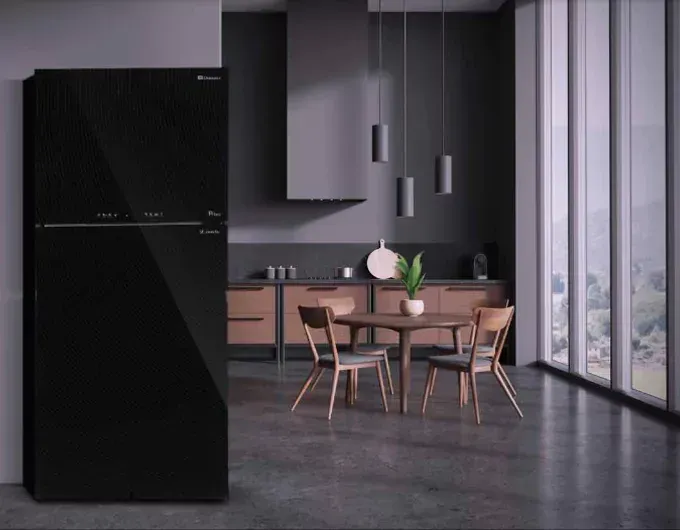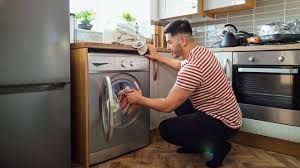Is Your Microwave on the Brink? Discover Quick Emergency Rescues!
In the modern kitchen, the microwave stands as a stalwart companion, streamlining meal preparation and providing swift solutions to our culinary needs. The significance of a functional microwave is often underestimated until it begins to exhibit signs of wear and tear. This post delves into the importance of a fully operational microwave and aims to guide you through recognizing the subtle indicators that your microwave might be on the brink of malfunction. As we embark on this exploration, we'll uncover the essential role microwaves play in our daily lives and shed light on the telltale signs that should prompt your attention. Prepare to discover quick emergency rescues to revive your microwave and ensure it continues to serve as the indispensable kitchen asset it was designed to be.
Emergency Rescues for Common Microwave Problems
Microwaves, indispensable in the modern kitchen, can encounter common issues that might disrupt their efficient operation. Here, we explore practical emergency rescues for three prevalent microwave problems.
Microwave Not Heating:
When troubleshooting a microwave that refuses to heat, begin by checking the power settings to ensure the appropriate level and duration are selected for
your specific cooking needs. Adjusting these settings might resolve heating issues. If the problem persists, delve deeper by inspecting the magnetron, a critical component responsible for generating microwave radiation. If, even after adjusting power settings, the microwave still fails to heat, a malfunctioning magnetron could be the underlying cause, necessitating professional inspection and potential replacement to restore optimal functionality.
Turntable Not Rotating:
Ensure your microwave's turntable operates smoothly by confirming the proper engagement of the turntable switch. Inadvertent disengagement of the switch might cause uneven heating due to the turntable being turned off. Activating the turntable switch can restore proper rotation, addressing potential heating issues. If the turntable remains stationary, delve deeper by inspecting the rotating mechanism beneath it. Clear any debris or residue that may impede the mechanism's movement, and consider lubricating the rotating components to facilitate smoother operation. This comprehensive approach ensures the effective functioning of the turntable in your microwave.
Unusual Sounds or Odors:
When confronted with
unusual sounds in your microwave, a thorough inspection of the interior is essential to identify potential issues. Such sounds may indicate the presence of foreign objects, so scrutinize the turntable and cavity walls for any misplaced utensils or debris. The removal of foreign objects can eliminate disruptive sounds and restore normal operation. Furthermore, unpleasant odors may stem from a compromised ventilation system. Check and clean the vents to prevent the buildup of residue or food particles, ensuring adequate ventilation for efficient odor removal during microwave operation. This comprehensive approach addresses both sound-related and odor-related concerns in your microwave.
By following these emergency rescues, users can troubleshoot common microwave problems promptly. Whether it's addressing heating issues by adjusting power settings and inspecting the magnetron, resolving turntable malfunctions through switch verification and mechanism examination, or tackling unusual sounds and odors by checking for foreign objects and assessing the ventilation system, these practical steps empower users to maintain their microwaves' optimal functionality.
Tips for Microwave Maintenance
Microwaves, essential for convenient cooking and reheating, benefit from regular maintenance to ensure longevity and optimal performance. Here are comprehensive tips to maintain your microwave effectively:
Regular Cleaning:
- Routinely wipe down the interior surfaces of the microwave with a damp cloth to remove food splatters, spills, and stains. Pay attention to the turntable, walls, and ceiling.
- Use a mild cleaning solution, such as a mixture of water and mild dish soap, for stubborn stains. Avoid abrasive cleaners that could damage the microwave's interior.
- Regularly inspect the door seal for any signs of wear, tear, or food residue. A clean and intact door seal ensures proper sealing during operation, preventing heat leakage.
Proper Use of Microwave-Safe Containers:
- Use only containers labeled as microwave-safe. Avoid materials like metal, certain plastics, and containers with metallic accents, as they can cause sparks or fires in the microwave.
- Do not microwave sealed containers, as pressure can build up and result in explosions. Loosen lids or coverings to allow steam to escape during heating.
- Be mindful of the temperature of the containers you place in the microwave. Extremely hot containers can damage the interior or pose a safety risk.
Scheduled Inspections:
- Regularly inspect the power cord and plug for any signs of damage. A frayed cord or damaged plug can pose a safety hazard and impact the microwave's performance.
- Ensure the turntable is functioning correctly. It should rotate smoothly during operation to ensure even heating. Clean the turntable regularly to prevent obstruction.
- Pay attention to any unusual odors or sounds during microwave operation. If you notice burning smells or strange noises, investigate the cause promptly and seek professional assistance if necessary.
- Make sure there are no obstructions or blockages in the ventilation system. Proper ventilation is crucial to prevent overheating and ensure efficient operation.
Incorporating these maintenance tips into your routine helps preserve the functionality of your microwave. Regular cleaning, proper container usage, and scheduled inspections not only extend the lifespan of your appliance but also contribute to safe and effective microwave operation. By adopting these practices, you can continue to rely on your microwave for convenient and hassle-free meal preparation.
The Right Time to Seek Professional Help
While many microwave issues can be addressed through user-friendly diagnostics and maintenance, there are situations where professional assistance is crucial. Recognizing the need for expert intervention is essential to ensure the safety, efficiency, and longevity of your appliance.
Signs of Irreparable Damage
Persistent heating issues in your microwave, despite adjusting power settings and inspecting the turntable, might indicate a malfunctioning magnetron. Due to the complexity of this crucial component, seeking professional help is advisable for a proper diagnosis and potential replacement. Another serious concern involves the presence of burnt wiring, a strong burning smell, or visible damage to internal components. In such cases, professional technicians can assess the extent of the damage and recommend appropriate repairs or replacements.
Similarly,
electronic control board failures, characterized by unresponsive buttons or persistent display errors, require professional assistance due to the complexity of these electronic components. Attempting to address such issues without expertise may exacerbate the problem. Professional intervention is crucial in ensuring the safe and effective restoration of your microwave's functionality.
Safety Concerns
A vigilant response to specific indicators is crucial for maintaining the safety and functionality of your microwave. Sparks or arcing during operation signify a serious safety hazard, demanding immediate cessation of use and unplugging of the appliance. Professional assistance is essential to identify and address the root cause. Unusual and loud noises, indicative of mechanical or electrical issues, should not be overlooked, prompting the need for professional help to conduct a comprehensive inspection of internal components and mitigate potential safety risks.
The emergence of smoke during microwave operation is a clear sign of malfunction, requiring immediate cessation of use, unplugging, and seeking professional assistance to address the issue and prevent safety hazards. Persistent, unusual, or burning odors, despite cleaning and ventilation checks, necessitate professional help, indicating potential internal issues that require expert assessment. Furthermore, any signs of electrical problems, such as tripped circuits or frequent power outages during microwave use, mandate professional attention, as attempting to resolve electrical issues without expertise can pose severe safety risks.
In all these cases, the expertise of a qualified technician is invaluable. Seeking professional help ensures accurate diagnosis, safe repairs, and the restoration of your microwave to optimal working condition. Prioritizing safety and acknowledging the limitations of DIY solutions in the face of irreparable damage or safety concerns is essential for the well-being of both the appliance and its users.
Conclusion
Navigating the potential challenges your microwave may face becomes more manageable with an understanding of quick emergency rescues. As a central appliance in modern kitchens, the microwave's efficiency is crucial, and recognizing signs of malfunction empowers users to undertake prompt diagnostics and implement practical solutions. Whether addressing heating issues, turntable malfunctions, or unusual sounds and odors, these emergency rescues can often restore your microwave's optimal functionality. By incorporating these insights into your kitchen routine, you not only enhance the longevity of your microwave but also ensure uninterrupted convenience in your daily culinary endeavors.




